Situated 45 kms south east of Bhopal in the Indian state of Madhya Pradesh, the Rock Shelters of Bhimbetka are a UNESCO World Heritage Site, and lie within the Vindhyan Hills. These enormous rock formations are gathered around the Bhimbetka Hill and the entire area is rich with flora and fauna, recurrent supplies of water and natural shelter. It is due to the presence of all these factors that a sustainable society was able to develop and flourish here.
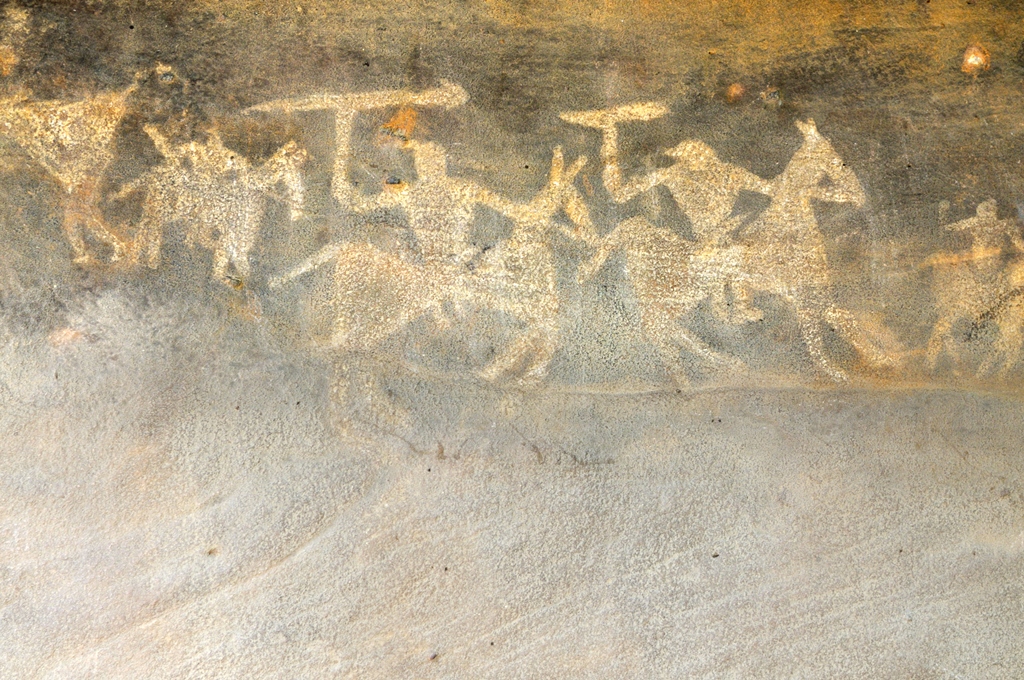
With some of its shelters even occupied by the Homo erectus more than 100,000 years ago, the Bhimbetka Rock Shelters are from the Paleolithic era, displaying the oldest traces of human life on the Indian Sub-Continent and marking the beginning of the South Asian Stone Age. The name Bhimbetka itself means the “resting place of Bhīma” and is believed to have come from Bhīma, from the epic Mahabharata. As per the skeletons found, the humans of that time were around 7 feet tall.
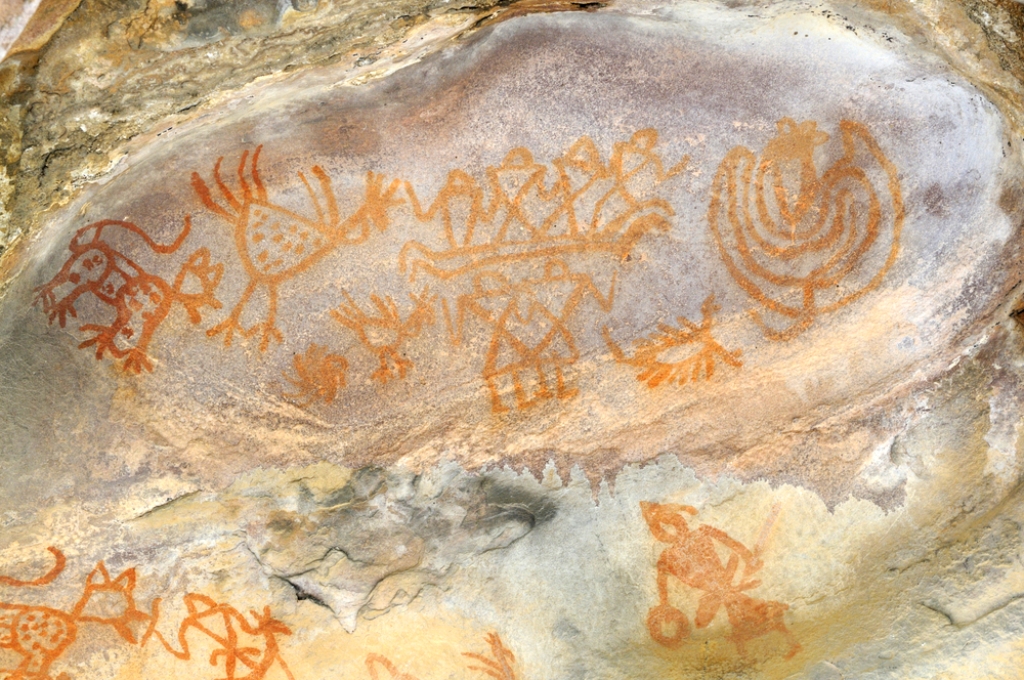
These rock shelters were first cited in the Indian archaeological records in 1888 as a Buddhist site, based on the information obtained from the local tribes. In the 1950s, Indian archaeologist V. S. Wakankar discovered these sites while on a train journey to Bhopal and found some of the rock formations to be alike those he had come across in France and Spain. Further studies by Wakankar and his team in 1957 led to a discovery of various prehistoric rock shelters.
Bhimbetka Rock Shelters are spread over an area of 30 sqkm and according to the Archeological Survey of India, house more than 700 rock shelters. Various stone tools such as hand-axes and cleavers tell us a lot about the earliest human activities here. Many other tools found here include triangles, trapezes, blades, crescents in addition to muller and quern. These tools do not belong to any one era but range from Lower Paleolithic to Upper Paleolithic to Mesolithic periods. The arrival of the Mesolithic Period marked a remarkable change in the kind of materials used for making these tools and this was also the time when interaction with the surrounding cultures began and grew.
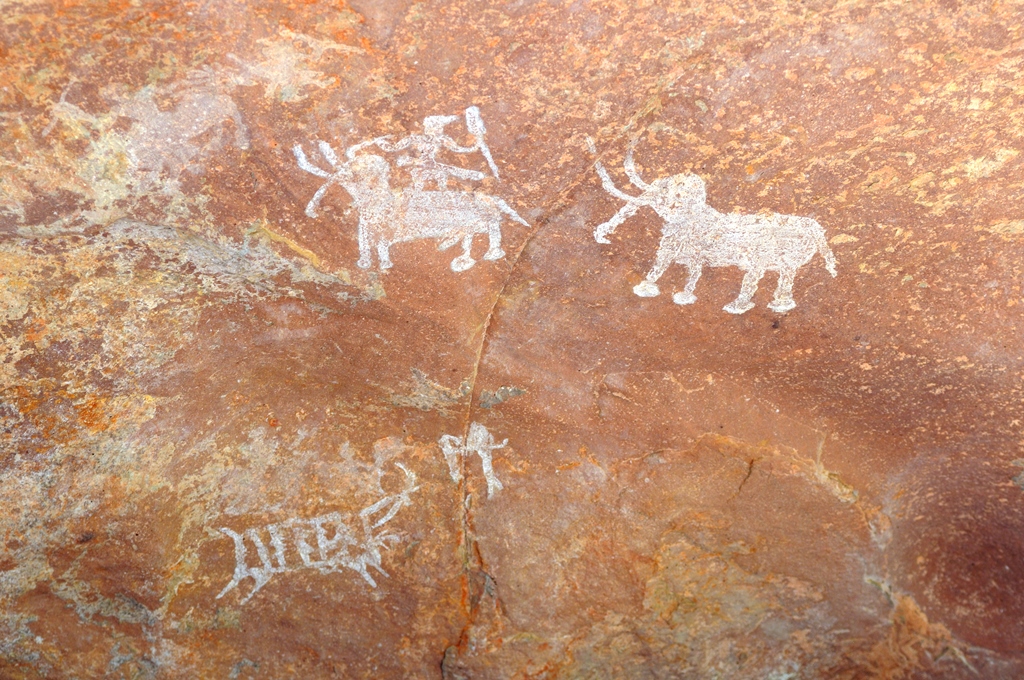
The biggest draw of these rock shelters are the rock paintings which provide evidence of this place being the very cradle of humanity in the Indian Sub-Continent. The paintings and other engravings are from Paleolithic, Mesolithic to Chalcolithic, Early Historic and even medieval periods. Categorizing from the oldest to the latest, the paintings in the Upper Paleolithic era consist of linear representations of huge animals like tigers, rhinos and bison in green and red lines, moving to human figures and scenes depicting hunting, in turn giving an idea of the kind of weaponry used in the Mesolithic period. In this period there are also engravings of birds, people dancing together, musical instruments, pregnant women, children, burials and more. Some of the paintings found here are at least 30,000 years old and also give an early evidence of dance being a form of entertainment back then.
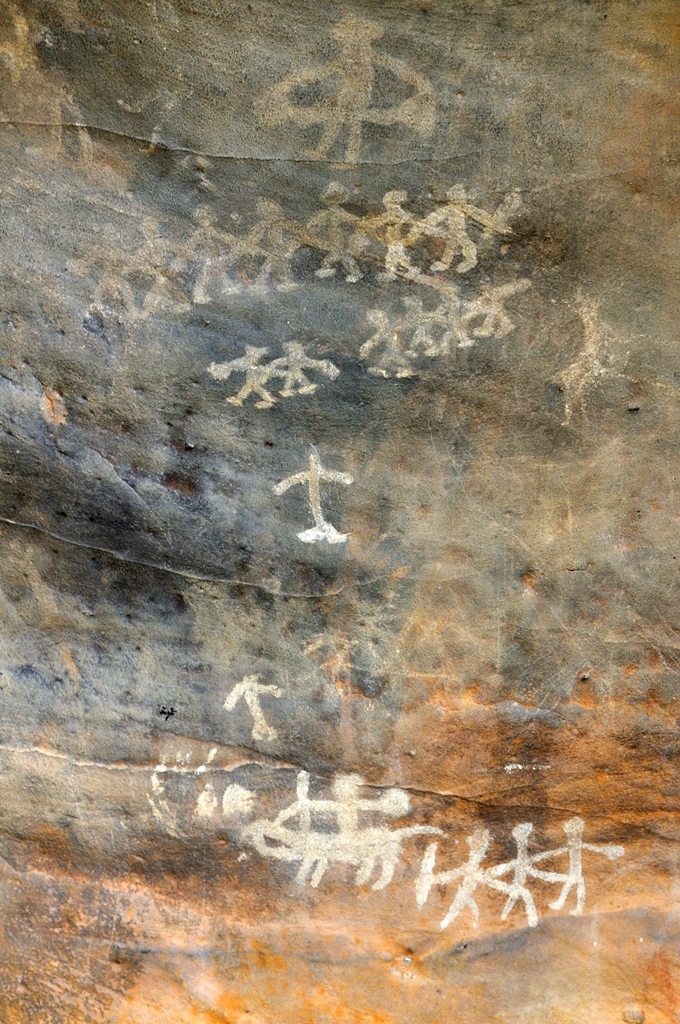
Paintings of the Chalcolithic period primarily unveil the connections made with the other agricultural communities and exchange of goods between them. Early Historic paintings are primarily in red, yellow and white and consist of religious symbols, tree gods, sky chariots and the presence of scripts of various periods. Other paintings show a man being hunted by a mythical horned wild boar, a man riding a horse, elephants, a peacock and flowers among others. One rock, referred to as Zoo Rock, has paintings of various animals like deer, bison, elephants and sambar.
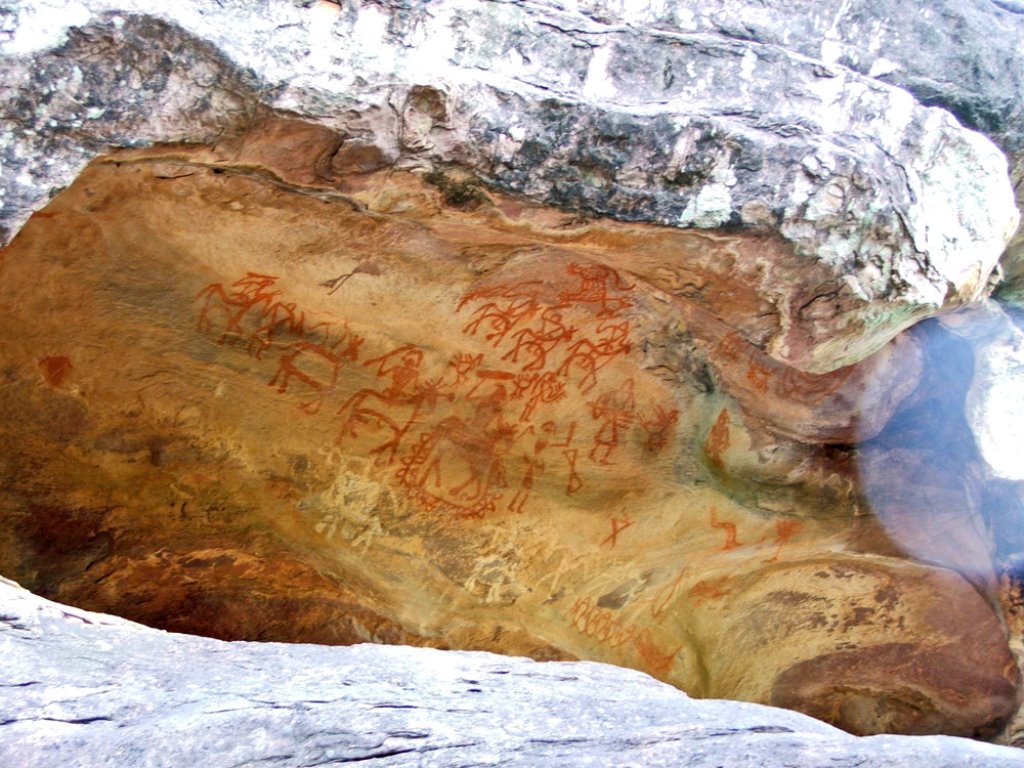
Other major attractions are Boar Rock and the Auditorium Rock Shelter and the latter has engravings of small cup like depressions that are aged at nearly 100,000 years. Satpura hills and Satpura National Park lie to the South of these Shelters. According to historians, Bhimbetka Rock Shelters share a striking resemblance to sites such as the Bushmen in Kalahari Desert, Kakadu National Park in Australia and Upper Paleolithic Lascaux cave paintings in France. One wonders if it’s a coincidence or did these people from different parts of the world actually met, interacted and shared information about their lives and surroundings!
This place is easily approachable from Bhopal airport or train station and can be clubbed with a wildlife safari at the Satpura National Park for a perfect weekend getaway.




Comments